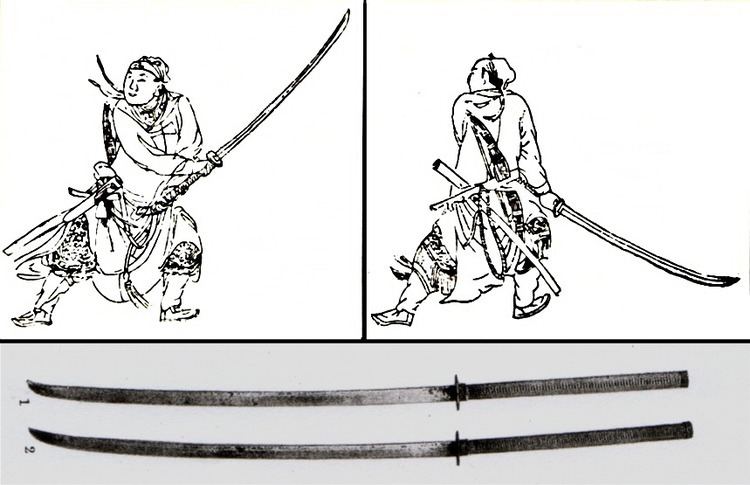Place of origin Han Dynasty, China Blade length Approx 150+ cm | Length Approx 200+ cm | |
 | ||
Type Infantry Anti-Cavalry Saber Blade type Single edged, straight for most of the length, curving in the last third. | ||
The zhanmadao (Chinese: 斬馬刀; pinyin: zhǎn mǎ dāo; literally: "horse chopping saber") was a single-bladed anti-cavalry Chinese sword. It was especially common during the Song Dynasty (960-1279).
Contents
General characteristics
The zhanmadao is a sabre with a single long broad blade, and a long handle suitable for two-handed use. It was used as an anti-cavalry weapon, dating from Emperor Cheng of Han, made to slice through horse's legs. This is mentioned in the "Wu Jing Zong Yao" a Song Military Manual from 1072. It featured prominently against the Jin armies in campaigns between 1129 and 1141.
Surviving examples include a sword that might resemble a nagamaki in construction; it had a wrapped handle 37 centimetres long making it easy to grip with two hands. The blade was 114 centimetres long and very straight with a slight curve in the last half.
Similar weapons
Possible variations of these Chinese swords were the changdao, miao dao, and wodao.
The sword may have been the inspiration for the Japanese Zanbatō as both are written with the same characters, and have been said to have been used for killing the horse and rider in one swing.
